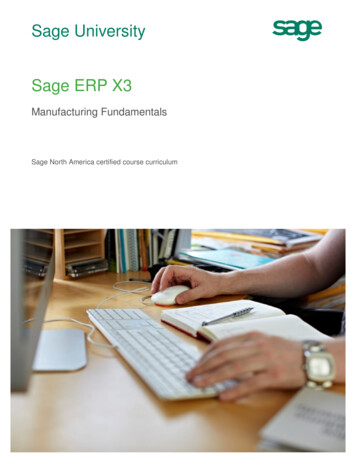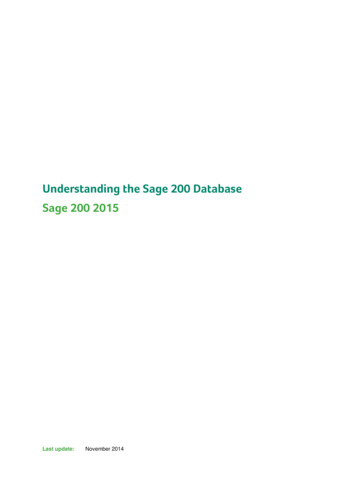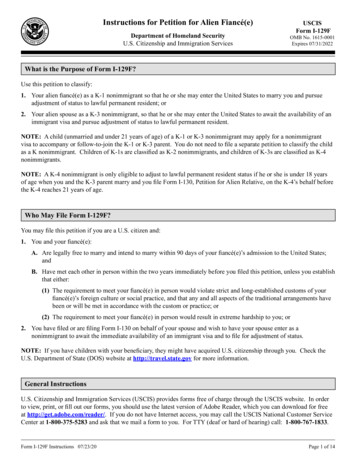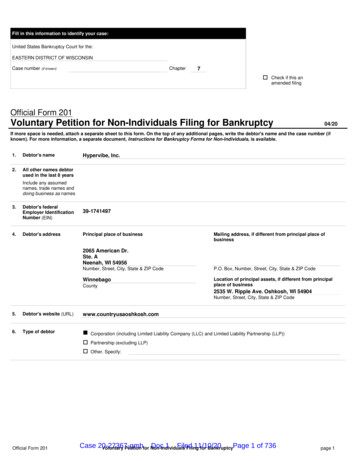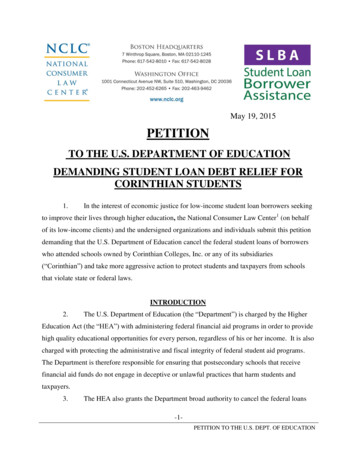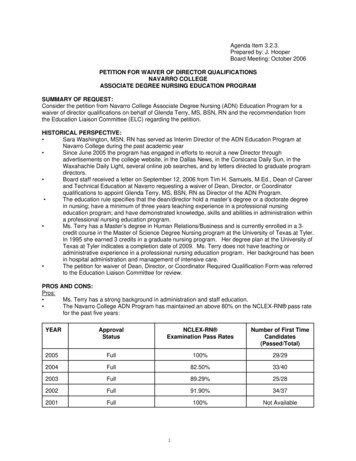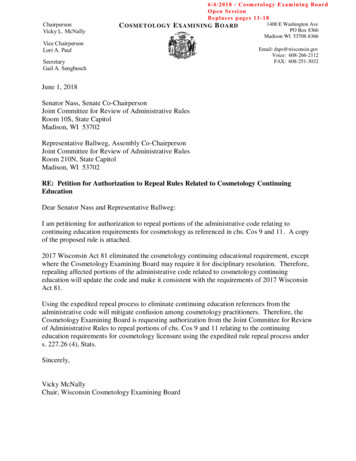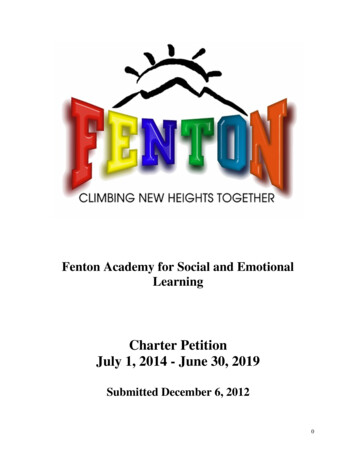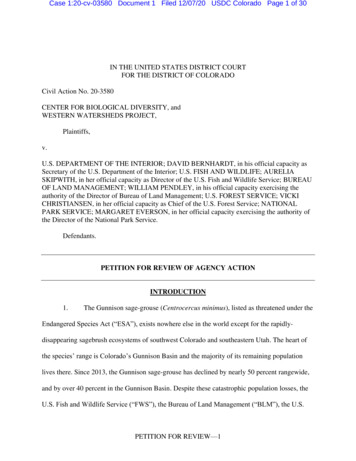
Transcription
Case 1:20-cv-03580 Document 1 Filed 12/07/20 USDC Colorado Page 1 of 30IN THE UNITED STATES DISTRICT COURTFOR THE DISTRICT OF COLORADOCivil Action No. 20-3580CENTER FOR BIOLOGICAL DIVERSITY, andWESTERN WATERSHEDS PROJECT,Plaintiffs,v.U.S. DEPARTMENT OF THE INTERIOR; DAVID BERNHARDT, in his official capacity asSecretary of the U.S. Department of the Interior; U.S. FISH AND WILDLIFE; AURELIASKIPWITH, in her official capacity as Director of the U.S. Fish and Wildlife Service; BUREAUOF LAND MANAGEMENT; WILLIAM PENDLEY, in his official capacity exercising theauthority of the Director of Bureau of Land Management; U.S. FOREST SERVICE; VICKICHRISTIANSEN, in her official capacity as Chief of the U.S. Forest Service; NATIONALPARK SERVICE; MARGARET EVERSON, in her official capacity exercising the authority ofthe Director of the National Park Service.Defendants.PETITION FOR REVIEW OF AGENCY ACTIONINTRODUCTION1.The Gunnison sage-grouse (Centrocercus minimus), listed as threatened under theEndangered Species Act (“ESA”), exists nowhere else in the world except for the rapidlydisappearing sagebrush ecosystems of southwest Colorado and southeastern Utah. The heart ofthe species’ range is Colorado’s Gunnison Basin and the majority of its remaining populationlives there. Since 2013, the Gunnison sage-grouse has declined by nearly 50 percent rangewide,and by over 40 percent in the Gunnison Basin. Despite these catastrophic population losses, theU.S. Fish and Wildlife Service (“FWS”), the Bureau of Land Management (“BLM”), the U.S.PETITION FOR REVIEW—1
Case 1:20-cv-03580 Document 1 Filed 12/07/20 USDC Colorado Page 2 of 30Forest Service (“Forest Service”), and the National Park Service (“NPS”) (collectively“Defendants”)—federal agencies responsible for conserving the species and its habitat—havedone little to protect its last viable population in the Gunnison Basin from the significant threatposed by livestock grazing. Instead, the agencies purportedly rely on outdated conservationmeasures from the Gunnison Basin Candidate Conservation Agreement (“Gunnison BasinCCA”) and its attendant Biological Opinion—but those measures have not been consistentlyapplied or enforced and have never been based on the best available science.2.Petitioners, Center for Biological Diversity and Western Watersheds Project(collectively, “Conservation Organizations”), bring this lawsuit against Defendants over theirfailure to ensure that the adoption and implementation of the Gunnison Basin CCA does notjeopardize the continued existence of the Gunnison sage-grouse or adversely modify its criticalhabitat in violation of the ESA. Petitioners also challenge the Gunnison Basin CCA’s BiologicalOpinion as arbitrary and capricious and contrary to the best available science.3.Pictured below, the Gunnison sage-grouse is a unique species of sage-grouse nowconfined to a small fraction of its historic range due to threats including habitat destructionprimarily caused by livestock grazing and residential development.PETITION FOR REVIEW—2
Case 1:20-cv-03580 Document 1 Filed 12/07/20 USDC Colorado Page 3 of 304.The agencies developed the Gunnison Basin CCA in 2013 after FWS proposed tolist the Gunnison sage-grouse as endangered and designate 1.7 million acres of critical habitat forthe bird. The Gunnison Basin CCA was intended to protect BLM, the Forest Service, and NPSfrom liability for incidental take to the Gunnison sage-grouse from development, recreation, andlivestock grazing authorized by the agencies in the species’ occupied critical habitat in the eventthat the species should be listed, and to specify needed conservation measures and monitoring.5.While they were developing the Gunnison Basin CCA, BLM, the Forest Service,and NPS purported to analyze the effects of the Gunnison Basin CCA on the Gunnison sagegrouse and its occupied critical habitat in a biological assessment, which they presented to FWSfor expert review. On July 30, 2013, FWS adopted the biological assessment’s analysis in a“conference opinion,” intended to advise the agencies on ways to minimize or avoid adverseeffects to Gunnison sage-grouse from implementing actions covered under the CCA.6.Subsequently, in November 2014, FWS listed the Gunnison sage-grouse as athreatened species under the ESA and designated 1.4 million acres as its critical habitat,including 500,909 acres of occupied critical habitat in the Gunnison Basin. Less than three weekslater, FWS adopted the conference opinion’s analysis of the Gunnison Basin CCA’s effects onthe Gunnison sage-grouse and its critical habitat in a formal “Biological Opinion”—theculmination of the “consultation” process mandated by the ESA. See 16 U.S.C. § 1536.7.FWS, through the Biological Opinion, concluded that, although certain authorizedactivities such as livestock grazing were likely to adversely affect the Gunnison sage-grouse, theGunnison Basin CCA would not jeopardize the continued existence of the Gunnison sage-grousePETITION FOR REVIEW—3
Case 1:20-cv-03580 Document 1 Filed 12/07/20 USDC Colorado Page 4 of 30or destroy or adversely modify its critical habitat if BLM, the Forest Service, and NPSimplemented specific conservation measures and adhered to annual reporting requirements.8.But those conservation measures were not based on the best available science atthe time the Biological Opinion was adopted and the Biological Opinion is deeply flawed: It failsto adequately account for the effects of grazing on the Gunnison sage-grouse and its criticalhabitat; relies on inadequate conservation measures and unsupported assumptions regarding theirefficacy; fails to adequately analyze the cumulative impacts on the grouse; and fails toadequately consider the Gunnison Basin CCA’s impacts on the grouse’s recovery. Thus,Defendants’ continued authorization of livestock grazing jeopardizes the Gunnison sage-grouse’scontinued existence, adversely modifies its critical habitat, and results in the unauthorized take ofGunnison sage-grouse in violation of the ESA.9.Further, BLM, the Forest Service, and NPS have not implemented theconservation measures or adhered to the Biological Opinion’s reporting requirements andGunnison sage-grouse populations have declined precipitously since the Biological Opinion’sadoption. The Gunnison Basin population in particular has declined from approximately 3,149birds in 2013 to only 1,667 in 2020. The spiral toward extinction of the Gunnison sage-grouse,the failure of the agencies to carry out required conservation measures and reportingrequirements, and new information regarding the effects of the activities covered under theGunnison Basin CCA on Gunnison sage-grouse each require Defendants to reinitiate ESAsection 7 consultation on the Gunnison Basin CCA. Their failure to do so violates the ESA andits implementing regulations.PETITION FOR REVIEW—4
Case 1:20-cv-03580 Document 1 Filed 12/07/20 USDC Colorado Page 5 of 3010.Consequently, the Conservation Organizations respectfully request that this Courtdeclare that Defendants’ continued reliance on the Biological Opinion is arbitrary and capriciousand violates the ESA and its implementing regulations, order Defendants to promptly reinitiateconsultation, and enjoin BLM, the Forest Service, and NPS from authorizing livestock grazing inoccupied Gunnison sage-grouse critical habitat on federal lands in the Gunnison Basin until anadequate and legally-valid consultation has been completed.JURISDICTION AND VENUE11.This Court has jurisdiction over this action pursuant to the citizen suit provisionof the ESA. 16 U.S.C. §§ 1540(g)(1), 1540(g)(2)(C). The Court also has jurisdiction pursuant to28 U.S.C. §§ 1331 and 1346, because this action involves the United States as a defendant andarises under the laws of the United States, including the ESA, 16 U.S.C. § 1531 et seq., theAdministrative Procedure Act (“APA”), 5 U.S.C. § 701 et seq., and the Equal Access to JusticeAct, 28 U.S.C. § 2214 et seq. The requested relief is proper under 16 U.S.C. § 1540(g)(1); 28U.S.C. §§ 2201, 2202, 1361; and 5 U.S.C. §§ 704, 705, 706.12.The Conservation Groups gave notice to Defendants of Conservation Groups’intent to file suit under the ESA for the violations described in the notice and this complaintmore than 60 days ago. 16 U.S.C. § 1540(g)(2)(C). The violations complained of in the noticehave not been remedied. The Defendants’ actions are final and ripe for review, and ConservationOrganizations have standing to bring these claims.13.Venue is proper in this Court pursuant to 16 U.S.C. § 1540(g)(3)(A) and 28U.S.C. § 1391(e). The Gunnison sage-grouse is located in this district, and FWS’ regional officewhich issued the Biological Opinion is located here.PETITION FOR REVIEW—5
Case 1:20-cv-03580 Document 1 Filed 12/07/20 USDC Colorado Page 6 of 3014.The federal government has waived sovereign immunity in this action pursuant to5 U.S.C. § 702 and 16 U.S.C. § 1540(g).PARTIES15.Plaintiff CENTER FOR BIOLOGICAL DIVERSITY (“Center”) is a non-profitorganization that is dedicated to the preservation, protection, and restoration of biodiversity,native species, and ecosystems. The Center was founded in 1989 and is based in Tucson,Arizona, with offices throughout the country, including Colorado. The Center has more than81,000 members, including many who reside in, explore, and enjoy the native species andecosystems of the Interior Mountain West and Colorado, including in the Gunnison Basin, wherethe Gunnison sage-grouse is found. The Center’s mission is to protect and conserve endangeredspecies and their habitats, including the Gunnison sage-grouse.16.The Center brings this action on behalf of itself and its members who deriveaesthetic, recreational, emotional, and spiritual benefits from the Gunnison sage-grouse and itscontinued existence in its native habitat, including in the Gunnison Basin.17.The Center’s members, including Pam Eaton, often visit occupied habitat in theGunnison Basin to view and enjoy Gunnison sage-grouse and their native habitat, includingspecific areas impacted by the activities covered by the Gunnison Basin CCA.18.Ms. Eaton and other Center members derive aesthetic, recreational, inspirational,emotional, and spiritual benefits from their visits to the Gunnison Basin in the hopes of viewingGunnison sage-grouse. Ms. Eaton intends to continue to visit occupied habitat in the GunnisonBasin frequently and on an ongoing basis in the future, including this coming mating season inspring of 2021. The areas of the Gunnison Basin that Ms. Eaton and other Center’s membersPETITION FOR REVIEW—6
Case 1:20-cv-03580 Document 1 Filed 12/07/20 USDC Colorado Page 7 of 30intend to continue to use and enjoy include specific areas impacted by the activities covered bythe Gunnison Basin CCA.19.The aesthetic, recreational, inspirational, emotional, and spiritual interests of Ms.Eaton and other Center members have been and will continue to be adversely affected andirreparably injured if Defendants’ ongoing violations of the ESA and APA continue. These areactual, concrete injuries caused by Defendants’ violations of the ESA and APA. The reliefsought will redress the Center and its members’ injuries.20.Plaintiff WESTERN WATERSHEDS PROJECT (“WWP”) is a nonprofitorganization with more than 12,000 members and supporters that is dedicated to protecting andrestoring western watersheds and wildlife through education, public policy initiatives, and legaladvocacy. WWP works to influence and improve public lands management throughout the Westwith a primary focus on the negative impacts of livestock grazing on 250 million acres ofwestern public lands, including harm to ecological, biological, cultural, historic, archeological,scenic resources, wilderness values, roadless areas, Wilderness Study Areas, and designatedWilderness.21.WWP brings this action on behalf of itself and its members who derive aesthetic,recreational, and spiritual benefits from the Gunnison sage-grouse and its continued existence inits native habitat in the Gunnison Basin.22.WWP’s staff and members, including Erik Molvar, often visit occupied habitat inthe Gunnison Basin in efforts to view and enjoy Gunnison sage-grouse and their native habitat,including specific areas impacted by the activities covered by the Gunnison Basin CCA, such asareas where livestock grazing is authorized.PETITION FOR REVIEW—7
Case 1:20-cv-03580 Document 1 Filed 12/07/20 USDC Colorado Page 8 of 3023.Mr. Molvar and other WWP staff and members derive aesthetic, recreational,inspirational, scientific, and spiritual benefits from their visits to the Gunnison Basin in the hopesof viewing Gunnison sage-grouse. Mr. Molvar intends to continue to visit occupied habitat in theGunnison Basin in search of Gunnison sage-grouse frequently and on an ongoing basis in thefuture, including in spring of 2021. The areas of the Gunnison Basin that Mr. Molvar and otherWWP members intend to continue to use and enjoy include specific areas impacted by theactivities covered by the Gunnison Basin CCA, like livestock grazing.24.The aesthetic, recreational, inspirational, scientific, and spiritual interests of Mr.Molvar and other WWP members have been and will continue to be adversely affected andirreparably injured if Defendants’ ongoing violations of the ESA and APA continue. These areactual, concrete injuries caused by Defendants’ violations of the ESA and APA. The reliefsought will redress WWP’s and its members’ injuries.25.Defendant U.S. DEPARTMENT OF THE INTERIOR is an agency of the UnitedStates charged with administering the ESA for non-marine species including the Gunnison sagegrouse.26.Defendant DAVID BERNHARDT is the Secretary of Interior and is the federalofficial in whom the ESA vests final responsibility for making decisions required by and inaccordance with the ESA. Secretary Bernhardt is sued in his official capacity.27.Defendant U.S. FISH AND WILDLIFE SERVICE is a federal agency within theDepartment of Interior charged with implementing and ensuring compliance with the ESA. TheSecretary of the Interior has delegated administration of the ESA to the Service. 50 C.F.R. §402.01(b).PETITION FOR REVIEW—8
Case 1:20-cv-03580 Document 1 Filed 12/07/20 USDC Colorado Page 9 of 3028.Defendant AURELIA SKIPWITH is the Director of the U.S. Fish and WildlifeService. Director Skipwith is sued in her official capacity.29.Defendant UNITED STATES BUREAU OF LAND MANAGEMENT is anagency within the United States Department of the Interior and is the federal agency chargedwith managing more than 245 million acres of public land in the United States. In this capacity,BLM is responsible for implementing and complying with federal law, including the federal lawsimplicated by this action.30.Defendant WILLIAM PENDLEY is sued in the official capacity of exercising theauthority of the Director of BLM.31.Defendant U.S. FOREST SERVICE is an agency within the U.S. Department ofAgriculture. It and its officers are responsible for the lawful management of the National ForestSystem.32.Defendant VICKI CHRISTIANSEN is the Chief of the Forest Service. ChiefChristiansen is sued in her official capacity.33.Defendant NATIONAL PARK SERVICE is an agency within the U.S.Department of the Interior, which is responsible for managing public lands under its authority inaccordance with the federal laws implicated in this action.34.Defendant MARGARET EVERSON is sued in the official capacity of exercisingthe authority of the Director of the National Park Service.PETITION FOR REVIEW—9
Case 1:20-cv-03580 Document 1 Filed 12/07/20 USDC Colorado Page 10 of 30THE RELEVANT STATUTORY AND REGULATORY SCHEMEI.THE ENDANGERED SPECIES ACT35.Enacted in 1973, the ESA is “the most comprehensive legislation for thepreservation of endangered species ever enacted by any nation.” Tenn. Valley Auth. v. Hill, 437U.S. 153, 180 (1978). It provides a means to conserve endangered and threatened species and theecosystems upon which they depend. 16 U.S.C. § 1531(b).36.To receive the full protections of the ESA, a species must first be listed by theSecretary of the Interior as “endangered” or “threatened.” Id. at § 1533. The ESA defines an“endangered species” as “any species which is in danger of extinction throughout all or asignificant portion of its range.” Id. § 1532(6). A “threatened” species is “any species which islikely to become an endangered species within the foreseeable future throughout all or asignificant portion of its range.” Id. § 1532(20).37.Recognizing the importance of timely habitat protections to the conservation andrecovery of endangered species, the ESA requires the designation of critical habitat concurrentlywith listing a species. Id. § 1533(a)(3)(A)(i); see also id. § 1533(b)(6)(C). Habitat designated ascritical habitat is essential to the species’ survival and recovery. Id. § 1532 (3), (5)38.If a species is proposed for listing but is not yet listed, FWS may work withfederal agencies, relevant states, and private parties to develop a “candidate conservationagreement” (“CCA”). These are formal agreements that seek to address the threats facing speciesthat may be listed under the ESA.39.If a federal agency action is likely to jeopardize a species proposed for listing, oradversely modify its proposed critical habitat, the federal agency must confer informally withPETITION FOR REVIEW—10
Case 1:20-cv-03580 Document 1 Filed 12/07/20 USDC Colorado Page 11 of 30FWS. 16 U.S.C. § 1536(a)(4); 50 C.F.R. § 402.10(a). During such a conference, FWS advisesthe federal agency “on ways to minimize or avoid adverse effects” to the species in a“conference opinion.” 50 C.F.R. § 402.10(c).40.Once a species is listed and critical habitat is designated, section 7 of the ESAimposes a substantive obligation on federal agencies to “insure that any action authorized,funded, or carried out by such agency . is not likely to jeopardize the continued existence of anyendangered or threatened species or result in the destruction or adverse modification of” habitatthat has been designated as critical for such species. Id. 16 U.S.C. § 1536(a)(2). The burden isplaced on the federal agency to show that any action it authorizes or carries out will notadversely impact a listed species.41.Jeopardy results where an action reasonably would be “expected, directly orindirectly, to reduce appreciably the likelihood of both the survival and recovery of a listedspecies in the wild by reducing the reproduction, numbers, or distribution of that species.” 50C.F.R. § 402.02. “Destruction or adverse modification means a direct or indirect alteration thatappreciably diminishes the value of critical habitat for both the survival and recovery of a listedspecies. Such alterations include, but are not limited to, alterations adversely modifying any ofthose physical or biological features that were the basis for determining the habitat to be critical.”Id. (2014).142.To fulfill the substantive mandates of section 7 of the ESA, federal agencies mustconsult with an expert agency—in the case of the Gunnison sage-grouse, FWS—beforeThe regulatory definition of “destruction or adverse modification” in place at the time of theBiological Opinion’s adoption in 2014 has since been amended. See Regulations for InteragencyCooperation, 84 Fed. Reg. 44,976 (Aug. 27, 2019).1PETITION FOR REVIEW—11
Case 1:20-cv-03580 Document 1 Filed 12/07/20 USDC Colorado Page 12 of 30undertaking actions with potential to affect listed species or their habitat. 16 U.S.C. § 1536; 50C.F.R. § 402.14(a), (b). If the proposed action “may affect” listed species or their criticalhabitats, formal consultation is required. Id. § 402.14(a).43.To complete formal consultation, FWS must provide the action agency with a“biological opinion” explaining how the proposed action will affect the listed species or habitat.16 U.S.C. § 1536(b); 50 C.F.R. § 402.14. In carrying out the consultation process, “each agencyshall
for expert review. On July 30, 2013, FWS adopted the biological assessment’s analysis in a “conference opinion,” intended to advise the agencies on ways to minimize or avoid adverse effects to Gunnison sage-grouse from implementing actions covered under the CCA. 6. Subsequently, in November 2014,


